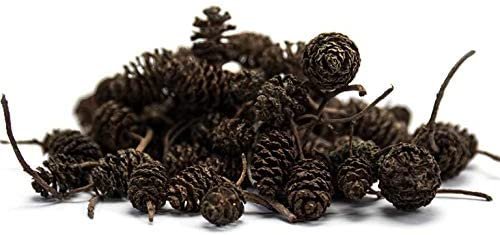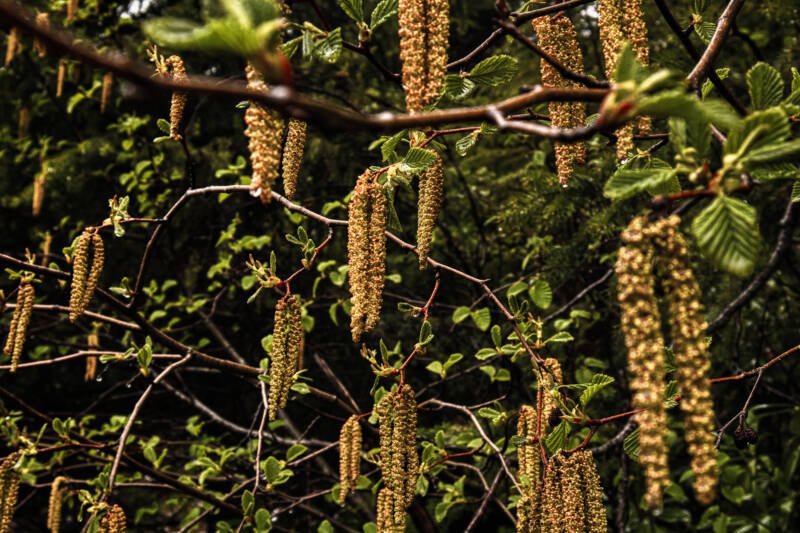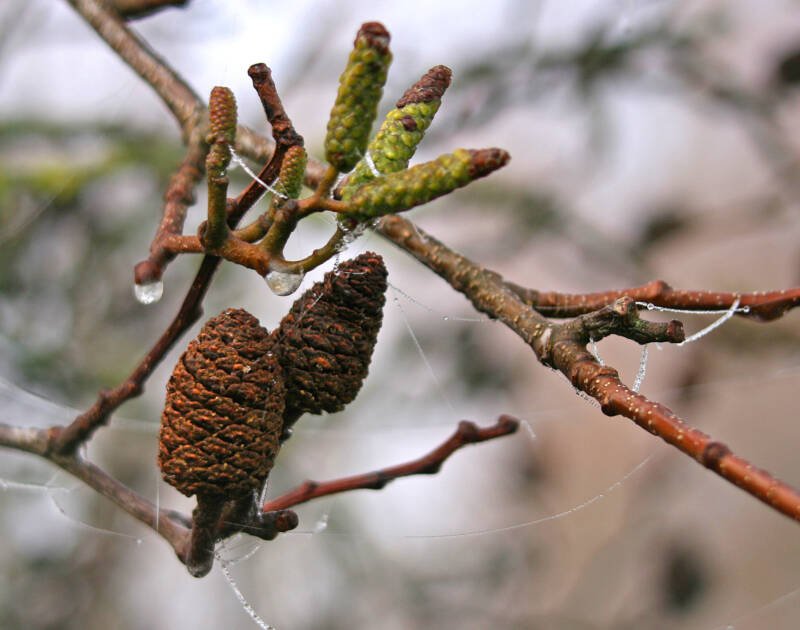If you’re new to the freshwater aquarium hobby, you may be unfamiliar with the use of alder cones and the benefits they offer to certain types of aquatic life.

No one knows who first tried adding this plant material to an aquarium, but the fact is they’re now used all over the world.
In this article
What are alder cones?

Many aquarists mistake alder cones for pine cones. The alder tree (Alnus species), also known as the common alder, black alder, European alder, European black alder, or just alder, is a native of Europe, Southwest Asia, and Northern Africa.
You’ll also find alder species in the US and Canada. The tree produces a cone-like flower containing male and female parts.
Once the female flower is pollinated, the flower turns brown and hardens into a ‘cone’ which holds the seeds.

Alder Cones’ Special Properties
Alder cones are naturally rich in tannins. The cones will slowly release tannic acid into the aquarium water.
Tannic acid can slightly lower the pH level in soft water aquariums.
Tannic acid, phenols, and other compounds leached from alder cones appear to have anti-fungal, anti-bacterial, and anti-parasitic properties.
Why add alder cones to an aquarium?
The benefits of using alder cones depend on the type of aquatic life you’re keeping.
Here’s a breakdown of all the uses and benefits of alder cones based on the type of aquarium.
South American Aquariums
A South American tank is designed to mimic the Amazonian river, which tends to be low in minerals and has an acidic pH.
Many of the Amazonian streams are tinted brown from natural tannins released by tree leaves.
Alder cones release tannins into the water and give the water a slight brown tint similar to Amazonian streams.
Have a look at our blackwater aquarium guide!
Fish Breeding
Many breeders of discus, angelfish, and dwarf cichlids believe the natural tannins released by alder cones causes the fish to spawn.
Breeders will “condition” breeding tanks by adding a few cones to the aquarium containing breeding pairs or groups of mated fish.
Betta Breeding
Betta breeders are especially concerned with protecting delicate eggs and fry from fish diseases.
Some betta breeders will use “cone water” to keep the eggs healthy in the bubble nest. It seems the tannins inhibit fungus from attacking the eggs.
Shrimp Keeping
In addition to the health benefits, alder cones provide freshwater shrimp with a natural feeding station.
Over time, the cones’ surface develops an invisible coating of bacteria, worms, and other tiny foods shrimp love to eat.
If you keep freshwater shrimp, be sure to add a few cones to the aquarium. Your shrimp will soon me climbing on the cones and feasting on the healthy live foods.
How to Use Alder Cones
Alder cones tend to float when first placed in the aquarium. They’ll eventually sink as the cone becomes water-logged.
You can speed the process up by soaking the cones in hot water for about 30 minutes. The cones will eventually sink and sit on the bottom of the tank.
If you like the cones’ look and enjoy seeing your fish and shrimp peck at the cones, you are all set.
You can also place the cones into your filter and allow the water to circulate through them. This works well if you don’t have shrimp or don’t like the look of cones in your aquarium.
How many cones do I use?
There is no exact number of cones per gallon rule. Most aquarists use about five cones per 10 gallons.
Will my water turn brown?
The amount of tannins in the cones and the number of cones used will affect how brown the water turns.
Most aquarists see a slight tint in the water. The water always stays clear. It will just have a slight tint.
How long do the cones last?
No one knows exactly when the cones stop releasing the natural substances. Replacing them every month will maintain the slight tint and ensure plenty of tannins in the water.
If you’ve got shrimp, leave some of the older ones in the tank. These will provide a source of live foods for the shrimp to graze on.
Closing Thoughts
Alder cones are an interesting and natural way to enhance your freshwater aquarium.
The cones release natural health-improving substances that keep your fish and shrimp healthy and happy.
Our next article will focus on another interesting plant: Indian almond leaves. Be sure to check it out and learn what these leaves can do for your aquarium!
If you have any questions or comments, please leave them below!